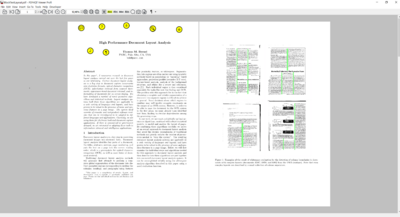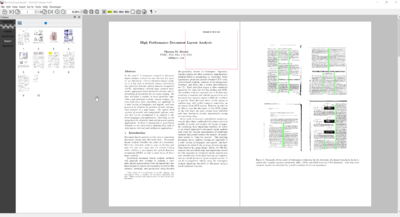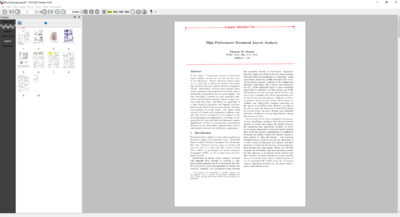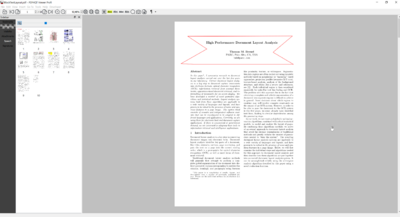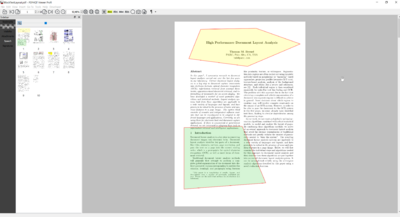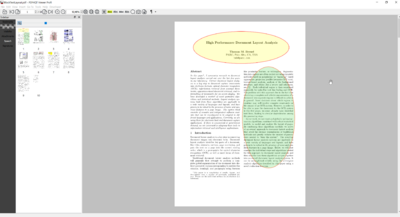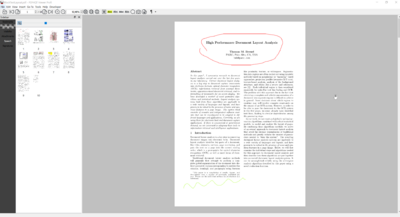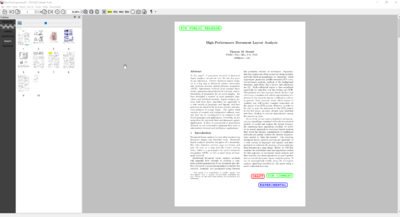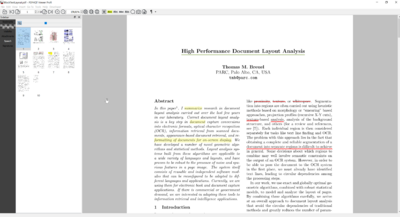How to annotate/markup a PDF document
Lectures ·PDF4QT ViewerProfi offers extensive annotation tools. You can annotate a PDF document with geometric shapes, sticky notes, stamps, text boxes and various forms of text highlighting. The tools are very easy to use, using your mouse to create annotations directly in the page of a PDF document. Go to the ‘Insert’ menu to start annotating your document. Annotator creates annotations as defined in the PDF 2.0 specifications.
Sticky notes
Sticky notes are small markers (in various graphic forms), which can be clicked on and contain text. To add a sticky note, go to the ‘Sticky Notes’ submenu under the ‘Insert’ menu. You can choose from Comment, Help, Insert, Key, New Paragraph, Note and Paragraph, which differ in graphic form only. After you click on a page of a PDF document, you can add a sticky note and enter text.
Hyperlink
To insert a clickable hyperlink, use the command ‘Hyperlink’ under the ‘Insert’ menu. You then select the hyperlink rectangle and enter the url adress of the hyperlink destination. The user can then click on the hyperlink and open the destination.
Inline text
Inline text annotation is a simple box with text content, using the given alignment and appearance. You can create this by selecting ‘Inline text’ under the ‘Insert’ menu. Subsequently select a rectangle on the page of the PDF document to create a text box with content.
Straight line
Straight line annotation is not just a straight line, but can also appear as, for example, a dimension. Lines can end with various shapes, such as arrows, diamonds, dots, etc. Additional text in the line, or above the line, can be added. The tool creates a straight red line; to modify, just edit the annotation.
Polyline and polygon
A polyline can have multiple internal points and end markers. A polygon is just a regular polygon with optional transparent filling. Both of these annotations are often used to mark an important area on a page. The appearance of the polyline or polygon can be changed via the context menu.
Ellipse
The ellipse annotation is simply an ellipse with transparent filling. It is also often used to mark important areas on a page of a PDF document.
Freehand curve
The freehand curve annotation draws shapes using mouse cursor tracking. After activating the tool, press and hold the left mouse button and draw the shape you require. Upon releasing the mouse button, the annotation is finished and created.
Stamp
Stamp annotation can fulfil various purposes (as a real stamp, or as a signal for users regarding important information e.g. that a document is not for public release - after it is finished, the stamp can be removed). The stamp can be of various forms and include different texts. Some of the most common texts can be found in the ‘Stamp’ submenu under the ‘Insert’ menu.
Text markdown
Text markdown annotations are used for text highlighting. There are four: ‘Highlight’ - which paints a transparent highlight box; ‘Underline’ - which draws a line under text; ‘Strikeout’ - which appears as a red line through the text; and ‘Squiggly’ - which appears as a wavy red line under text - often used to mark grammar mistakes. It goes without saying that the tool enables you to easily select the text you wish to mark.
Edit/clone/delete annotations
Existing annotations can easily be edited, deleted or cloned onto multiple pages. Just click on an annotation to display the context menu, where you can choose from several actions, such as edit, delete or clone onto multiple pages. If you want to modify the content of an annotation, choose edit. The edit dialog then appears, where you can subsequently choose all the properties of the selected annotation.
The cloning feature is also very useful. If, for example, you want to mark each page with a stamp, or display a textbox with copyright information, etc., just click on ‘Clone to Multiple Pages’. The dialog appears for page selection. After the pages have been selected, the annotation is copied.
Notes
- Annotations are specified directly in the PDF file in standard format as defined in the PDF 2.0 specifications
- Utilize Undo/Redo action to undo unwanted changes or redo changes accidentaly undone
- Annotations can be cloned, edited and deleted
- Easy tools are available for the most common types of annotation
- The redaction of annotations is facilitated by utilizing the ‘Redact’ plug-in
